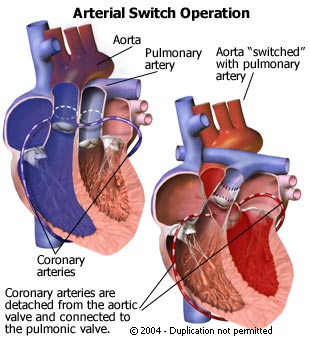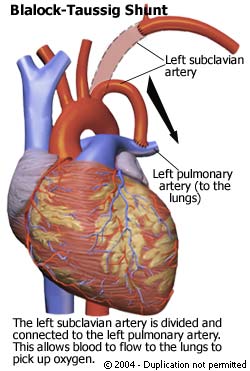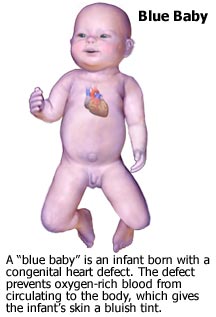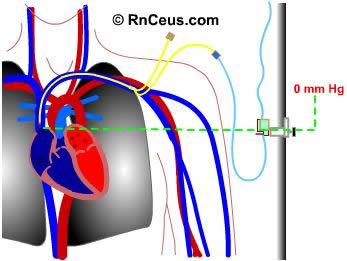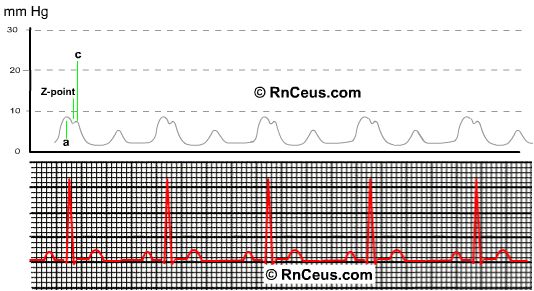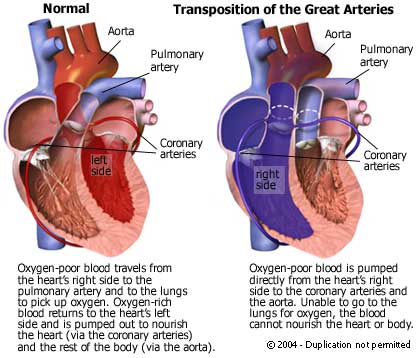Perhatian: Jangan sekali-kali menyimpan pisang dalam peti sejuk. Lepas baca anda semua pasti akan pandang tinggi pada buah pisang.
Pisang mengandungi 3 jenis gula semulajadi – sukrosa, fruktosa dan glukosa yang digabungkan dengan gentian. Pisang memberikan tenaga kepada manusia dengan kadar segera dan berterusan. Kajian yang telah dibuat menunjukkan bahawa 2 biji pisang mempunyai cukup tenaga untuk senaman selama 90 minit. Tidak hairanlah pisang dijadikan buah utama kepada atlit terkenal dunia. Bukan itu saja, malah pisang juga amat sesuai untuk mencegah dan merawat beberapa jenis penyakit, menjadikannya amat sesuai dalam pemakanan kita seharian.
Tekanan:
Merujuk kepada survey terbaru yang dijalankan oleh MIND terhadap pesakit-pesakit tekanan jiwa, kebanyakan daripada mereka kembali pulih selepas makan pisang. Ini kerana pisang mengandungi tryptophan, iaitu sejenis protin yang bertukar kepada serotonin dalam tubuh manusia, yang menyebabkan kita tenang, mengembalikan mud dan secara amnya membuatkan kita berasa gembira.
Merujuk kepada survey terbaru yang dijalankan oleh MIND terhadap pesakit-pesakit tekanan jiwa, kebanyakan daripada mereka kembali pulih selepas makan pisang. Ini kerana pisang mengandungi tryptophan, iaitu sejenis protin yang bertukar kepada serotonin dalam tubuh manusia, yang menyebabkan kita tenang, mengembalikan mud dan secara amnya membuatkan kita berasa gembira.
PMS:
Lupakan pil-pil hospital – makan sahaja pisang. Vitamin B6 yang terkandung mampu meneutralkan paras glukosa dalam darah, yang boleh mengembalikan mud anda.
Lupakan pil-pil hospital – makan sahaja pisang. Vitamin B6 yang terkandung mampu meneutralkan paras glukosa dalam darah, yang boleh mengembalikan mud anda.
Anemia:
Dengan kandungan zat besi yang tinggi, pisang mampu mengawal pertumbuhan hemoglobin dalam darah, yang secara tak langsung membantu dalam kes-kes anemia.
Dengan kandungan zat besi yang tinggi, pisang mampu mengawal pertumbuhan hemoglobin dalam darah, yang secara tak langsung membantu dalam kes-kes anemia.
Tekanan Darah Tinggi:
Buah tropikal unik ini mengandungi kadar potassium yang tinggi – garam rendah, menjadikannya sempurna untuk menstabilkan tekanan darah.
Buah tropikal unik ini mengandungi kadar potassium yang tinggi – garam rendah, menjadikannya sempurna untuk menstabilkan tekanan darah.
Kuasa Minda:
Kajian dibuat terhadap 200 pelajar di sebuah sekolah di mana semasa peperiksaan dijalankan, mereka diberi makan pisang untuk sarapan, rehat, dan makan tengahari. Keputusannya, buah pisang yang mengandungi kadar potassium yang tinggi dapat membantu pembelajaran dengan menjadikan pelajar-pelajar itu lebih cekap (alert).
Kajian dibuat terhadap 200 pelajar di sebuah sekolah di mana semasa peperiksaan dijalankan, mereka diberi makan pisang untuk sarapan, rehat, dan makan tengahari. Keputusannya, buah pisang yang mengandungi kadar potassium yang tinggi dapat membantu pembelajaran dengan menjadikan pelajar-pelajar itu lebih cekap (alert).
Penghadaman:
Gentian tinggi, jadikan pisang sebagai diet seharian anda pasti membantu menstabilkan tindakan usus kecil dan besar.
Gentian tinggi, jadikan pisang sebagai diet seharian anda pasti membantu menstabilkan tindakan usus kecil dan besar.
Keletihan:
Salah satu cara terbaik untuk mengurangkan keletihan ialah dengan membuat minuman pisang susu campur madu. Pisang bertindak menyejukkan perut dan dengan bantuan madu dapat membina semula kandungan gula dalam darah yang berkurangan akibat keletihan, manakala susu pula memperbetulkan sistem hidrasi semula anda.
Salah satu cara terbaik untuk mengurangkan keletihan ialah dengan membuat minuman pisang susu campur madu. Pisang bertindak menyejukkan perut dan dengan bantuan madu dapat membina semula kandungan gula dalam darah yang berkurangan akibat keletihan, manakala susu pula memperbetulkan sistem hidrasi semula anda.
Panas Jantung:
Pisang mempunyai kesan anti-asid semulajadi dalam badan. Oleh itu, jika anda menghadapi rasa panas di jantung, cuba makan pisang untuk pemulihan yang baik.
Pisang mempunyai kesan anti-asid semulajadi dalam badan. Oleh itu, jika anda menghadapi rasa panas di jantung, cuba makan pisang untuk pemulihan yang baik.
Demam Pagi:
Jadikan pisang sebagai snek setiap hari untuk membantu memelihara kadar gula dalam darah untuk mengelakkan demam pagi.
Jadikan pisang sebagai snek setiap hari untuk membantu memelihara kadar gula dalam darah untuk mengelakkan demam pagi.
Gigitan Nyamuk:
Sebelum menggunakan krim gigitan serangga, cuba sapukan kawasan bekas gigitan nyamuk dengan lapisan dalam kulit pisang. Ramai yang telah berjaya mengatasi kegatalan akibat gigitan nyamuk dengan cara ini.
Sebelum menggunakan krim gigitan serangga, cuba sapukan kawasan bekas gigitan nyamuk dengan lapisan dalam kulit pisang. Ramai yang telah berjaya mengatasi kegatalan akibat gigitan nyamuk dengan cara ini.
Saraf:
Pisang mengandungi kadar vitamin B yang tinggi yang dapat membantu menenangkan sistem saraf anda.
Pisang mengandungi kadar vitamin B yang tinggi yang dapat membantu menenangkan sistem saraf anda.
Obesiti dan Tekanan Kerja:
Kajian di Institut Psikologi di Austria mendapati tekanan kerja menjadi pemangkin kepada pengambilan makanan seperti coklat dan kerepek. Berdasarkan 5,000 pesakit hospital, kajian mendapati kebanyakan pesakit obes membuat kerja-kerja tekanan tinggi. Laporan juga menyatakan, untuk mengatasi masalah ini, kita perlu mengawal kadar gula dalam darah dengan mengambil makanan karbohidrat tinggi setiap 2 jam untuk mengekalkan kadar yang stabil. Makanlah pisang.
Kajian di Institut Psikologi di Austria mendapati tekanan kerja menjadi pemangkin kepada pengambilan makanan seperti coklat dan kerepek. Berdasarkan 5,000 pesakit hospital, kajian mendapati kebanyakan pesakit obes membuat kerja-kerja tekanan tinggi. Laporan juga menyatakan, untuk mengatasi masalah ini, kita perlu mengawal kadar gula dalam darah dengan mengambil makanan karbohidrat tinggi setiap 2 jam untuk mengekalkan kadar yang stabil. Makanlah pisang.
Ulser:
Pisang amat baik dalam pencegahan ulser kerana ia bersifat lembut dan tidak mencederakan organ dalaman kita. Ia juga bertindak sebagai peneutral lebihan asid serta mengurangkan kepedihan dengan bertindak menyaluti lapisan dinding perut kita.
Pisang amat baik dalam pencegahan ulser kerana ia bersifat lembut dan tidak mencederakan organ dalaman kita. Ia juga bertindak sebagai peneutral lebihan asid serta mengurangkan kepedihan dengan bertindak menyaluti lapisan dinding perut kita.
Kawalan Suhu:
Ramai yang percaya bahawa dengan memakan pisang, ia dapat menurunkan suhu kedua-dua fizikal dan emosi kepada ibu-ibu mengandung. Di Thailand sebagai contoh, ibu mengandung mengambil pisang untuk memastikan bayi yang dilahirkan itu menjadi seorang yang penyabar (cool).
Ramai yang percaya bahawa dengan memakan pisang, ia dapat menurunkan suhu kedua-dua fizikal dan emosi kepada ibu-ibu mengandung. Di Thailand sebagai contoh, ibu mengandung mengambil pisang untuk memastikan bayi yang dilahirkan itu menjadi seorang yang penyabar (cool).
Seasonal Affective Disorder (SAD):
Penyakit ini merupakan simptom yang terjadi akibat daripada kurangnya pendedahan kepada cahaya matahari. Pisang dapat membantu pesakit ini kerana ia mengandungi tryptophan semulajadi yang membaikpulih mud kita.
Penyakit ini merupakan simptom yang terjadi akibat daripada kurangnya pendedahan kepada cahaya matahari. Pisang dapat membantu pesakit ini kerana ia mengandungi tryptophan semulajadi yang membaikpulih mud kita.
Ketagihan Rokok & Tembakau:
Pisang dapat membantu perokok yang ingin berhenti merokok. Vitamin B6, B12, potassium dan magnesium yang terdapat dalam pisang, ia dapat membantu tubuh kita dalam membaikpulih kesan nikotin terhadap tubuh.
Pisang dapat membantu perokok yang ingin berhenti merokok. Vitamin B6, B12, potassium dan magnesium yang terdapat dalam pisang, ia dapat membantu tubuh kita dalam membaikpulih kesan nikotin terhadap tubuh.
Stres:
Potassium merupakan bahan mineral vital, yang membantu menormalkan degupan jantung, menghantar oksigen kepada otak dan mengimbangi kandungan air dalam tubuh. Bila kita stres, kadar metabolisma kita naik, menyebabkan kadar potassium menurun. Keadaan ini dapat diimbangi semula dengan bantuan snek pisang yang tinggi potassium.
Potassium merupakan bahan mineral vital, yang membantu menormalkan degupan jantung, menghantar oksigen kepada otak dan mengimbangi kandungan air dalam tubuh. Bila kita stres, kadar metabolisma kita naik, menyebabkan kadar potassium menurun. Keadaan ini dapat diimbangi semula dengan bantuan snek pisang yang tinggi potassium.
Strok:
Mengikut kajian dalam buku ‘The New England Journal of Medicine‘, mengambil pisang sebagai diet harian mampu mengurangkan risiko kematian akibat strok sebanyak 40%!
Mengikut kajian dalam buku ‘The New England Journal of Medicine‘, mengambil pisang sebagai diet harian mampu mengurangkan risiko kematian akibat strok sebanyak 40%!
Lain-lain Penyakit Kulit:
Pengamal perubatan semulajadi (alternatif) berpendapat, untuk menghilangkan pelbagai masalah kulit, termasuk jerawat, kudis, parut, kurap, dan sebagainya, ambil sekeping kulit pisang, tampalkan sebelah dalam kulit pisang itu pada tempat yang ingin dirawat dengan menggunakan plaster luka biasa atau pun plaster bedah.
Pengamal perubatan semulajadi (alternatif) berpendapat, untuk menghilangkan pelbagai masalah kulit, termasuk jerawat, kudis, parut, kurap, dan sebagainya, ambil sekeping kulit pisang, tampalkan sebelah dalam kulit pisang itu pada tempat yang ingin dirawat dengan menggunakan plaster luka biasa atau pun plaster bedah.
Jadi, pisang memang merupakan ubat semulajadi kepada banyak penyakit. Jika dibandingkan dengan epal, pisang mempunyai 4 kali ganda kandungan protin, 2 kali karbohidrat, 3 kali fosforus, 5 kali vitamin A dan zat besi, dan 2 kali vitamin dan mineral lain. Ia juga kaya dengan potassium dan merupakan salah satu makanan terbaik yang mudah didapati.
Jadi mungkin inilah masa untuk berubah kepada kata yang biasa disebut-sebut, “Sebiji pisang sehari dapat menjauhkan doktor!”
PS: Kesimpulannya, pisanglah adalah penyebab utama kenapa monyet-monyet di hutan selalu sihat dan bahagia setiap masa dan ketika! Satu lagi; ingin kilatkan kasut?? Ambil bahagian dalam kulit pisang, sapukan secara terus kepada kasut anda, kemudian kilatkan dengan kain kering. Menakjubkan!

